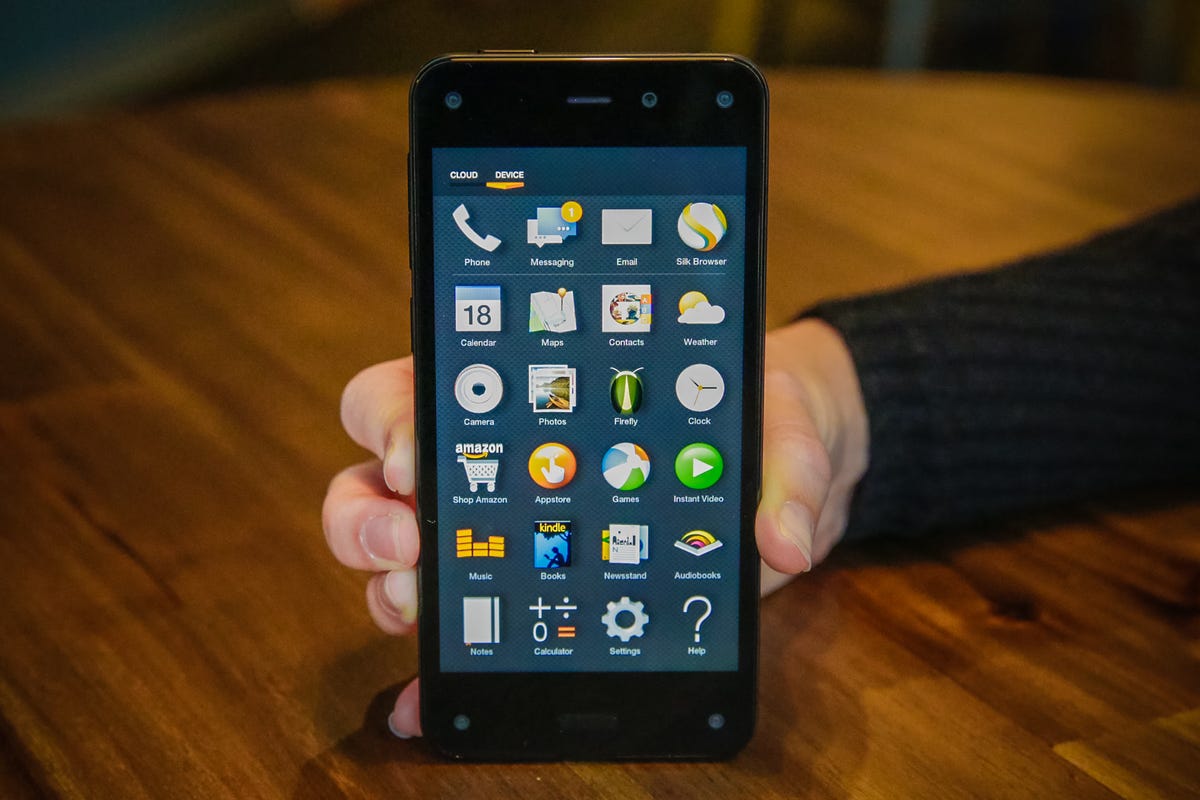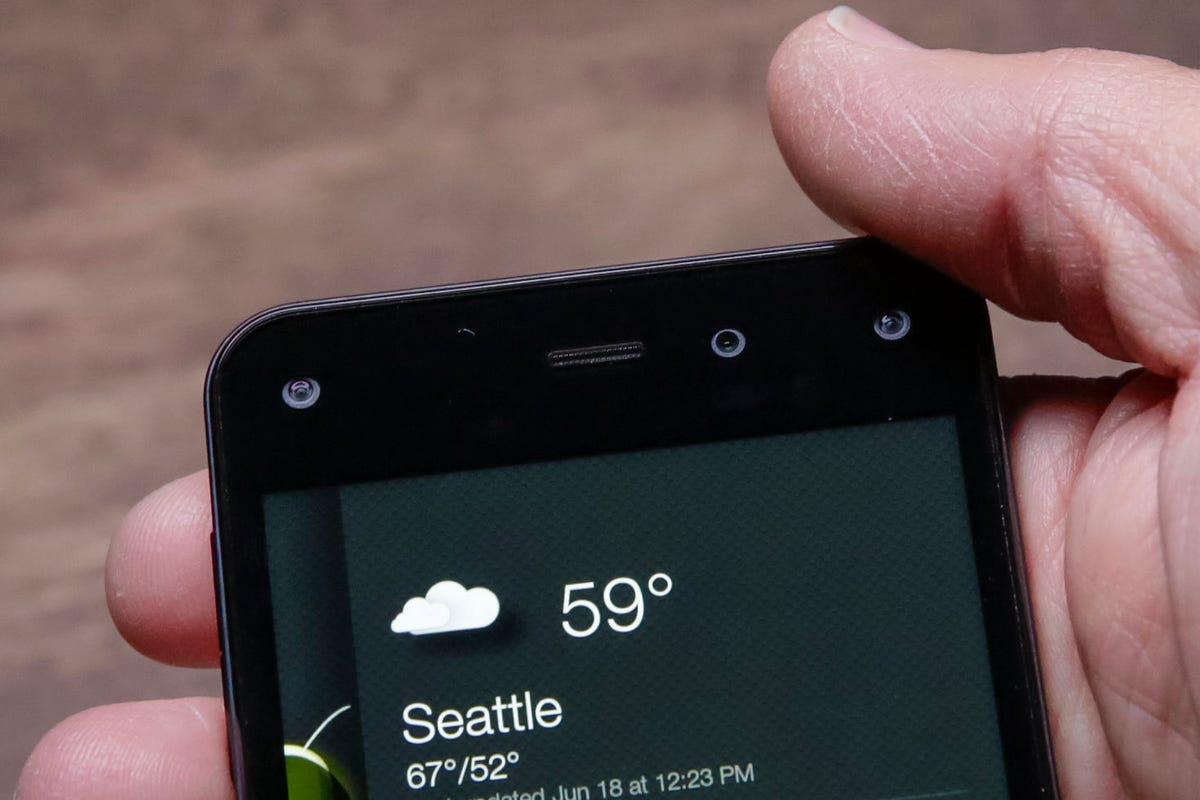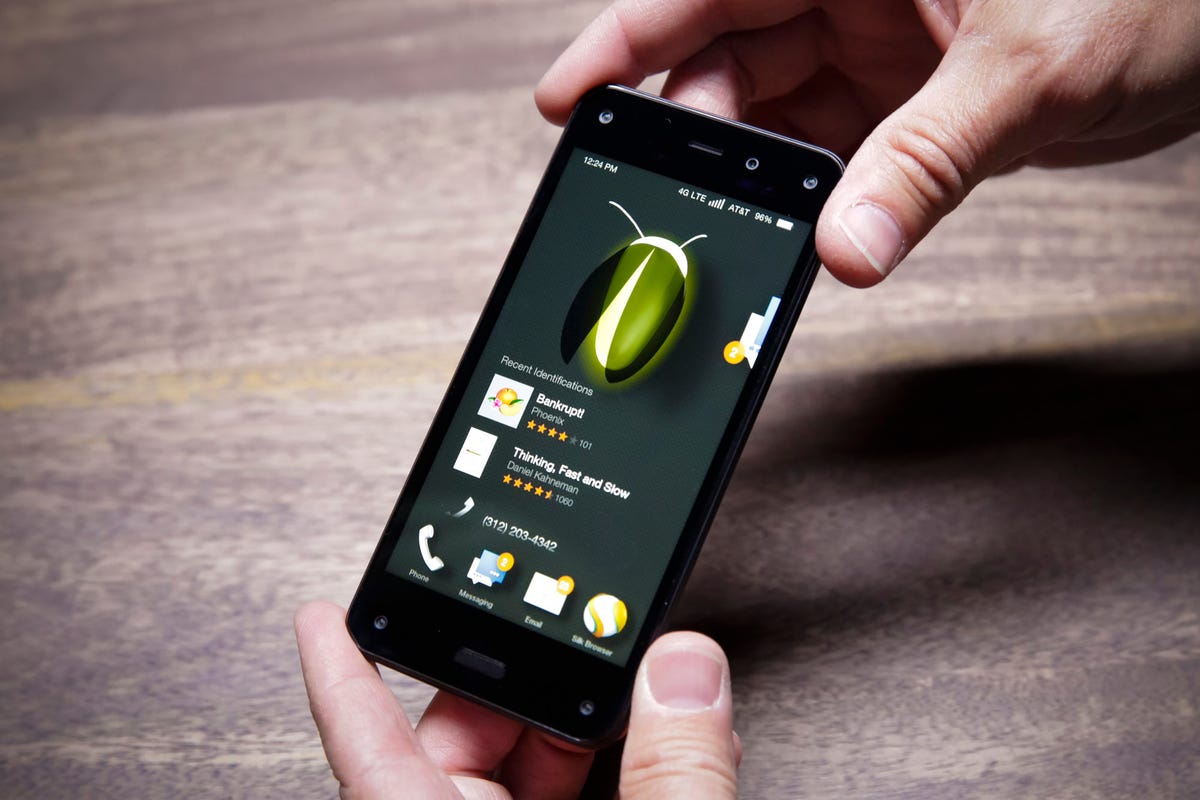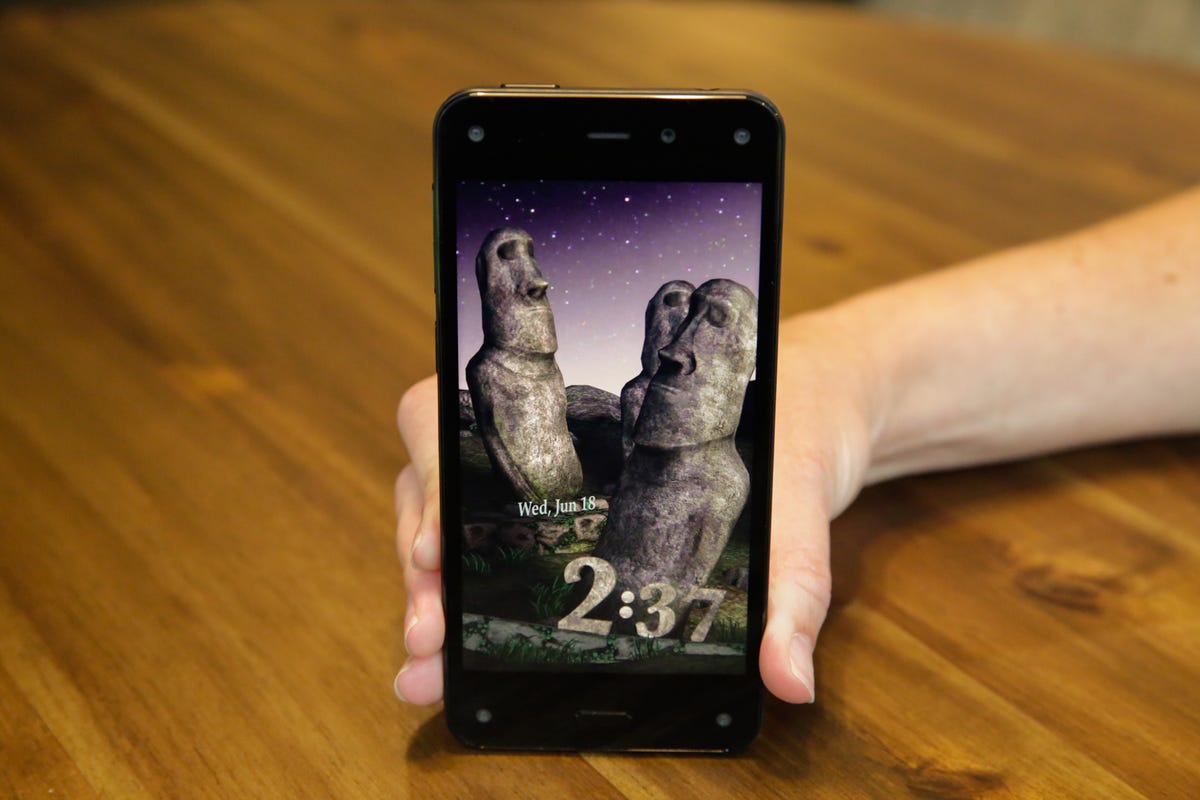
James Martin/CNET
Amazon’s long-rumored Fire Phone finally debuted yesterday, brimming with features of all kinds. Not surprisingly, easy access to Amazon’s existing services is a centerpiece of the handset, but CEO Jeff Bezos eagerly highlighted other features like 3D effects and a camera with image stabilization.
Yet while Amazon is new to the smartphone game, are the Fire Phone
‘s features new as well, or have we seen them before? We’ll break down what’s original and what’s not below.
Going hands-on with the Amazon Fire Phone (pictures)






Prime Music app
With the Prime Music app, Amazon hopes to lure more customers to its $99-a-year Prime service by providing free streaming music to its Prime subscribers. Users can stream and download songs offline across several mobile devices and even car dashboards. The service is ad-free and provides tailored playlists as well.
But Prime Music has a lot of others to contend with, as there is no shortage of streaming music services available. Most notable rivals include Google Play Music , Rdio , Pandora, iTunes Radio , Beats Music , and Spotify, which is arguably the most popular of the platforms. Most of these services come free with ads and playback limitations, or cost about $10 a month without ads. Just like Prime, users can access these services on their mobile handsets, listen to curated playlists, and play songs offline. In addition, while Prime boasts that it has “over a million songs,” both Spotify and Beats Music have more than 20 million tracks.
More Amazon Fire Phone coverage
- Fire Phone pulls together Amazon app universe onto one device
- Amazon Fire Phone’s Dynamic Perspective offers a new angle on smartphone displays
- Amazon Fire phone features four ‘stereovision’ cameras for face tracking
- When and where to buy the Amazon Fire Phone
- What you need to know about the Fire Phone’s app store
Optical image stabilization
To eliminate motion blur that can come from a user’s unsteady hand while taking a photo, the Amazon Fire smartphone has an optical image stabilizer in its 13-megapixel camera. Compared to a software-based digital image stabilizer, having an OIS means there is a physical component (in the Fire’s case, “tiny motors”) that adjusts and counteracts against the movement of a user’s hand.
This feature is nothing new. We saw this first with the Nokia Lumia 920 (which launched in 2012 with a controversial simulated video) and the Lumia 1020 following that. LG handsets have it too, including the G Flex , G2 , and Google Nexus 5 , as well as the HTC One .


Now playing:
Watch this:
Amazon’s new “3D” Fire Phone turns heads
4:36
Dolby Digital Plus
The Amazon Fire has Dolby Digital Plus virtual surround sound for your tunes. Though that adds a well-known brand to the phone and we expect the quality to be admirable, both the Nokia 808 PureView and N8 already have the feature.


James Martin/CNET
Tilt scroll and eye tracking
Amazon’s Fire phone handset includes four specialized cameras located on the frontside of the device which track a user’s eyes and head movement. This enables the phone to bring about a unique 3D interface for graphics and gameplay, as well as auto-scrolling with tilt gestures.
Though no other device has ever brought eye-tracking to this level of technology (these cameras are even equipped with infrared LEDs so they can function in the dark), previous handsets have incorporated some form of “eye-tracking.” When it first debuted, the Samsung Galaxy S4 made waves because of its already heavily-rumored (at the time) Smart Scroll and Smart Pause features. The former lets users tilt their GS4s to enable autoscrolling, while the latter pauses videos when the single front-facing camera senses that your eyes are looking away from the screen. LG soon followed suit with its own Smart Video feature, which works the same way as Samsung’s Smart Pause.


James Martin/CNET
Firefly
Bezos spent a lot of time highlighting Firefly , a visual recognition app that’s part personal shopper, part information portal, and part solution to the always-important question of “what else has she been in?” And there’s little wonder that he did, considering how the app is primarily designed to get Fire Phone owners to shop on Amazon and keep them coming back for more by knowing what they like.
That’s because the linchpin of Firefly is its ability scan and recognize the barcodes of more than 70 million products. That sounds like a lot — and it certainly is — but checking online prices by scanning a barcode is already possible not only on Amazon’s existing iOS and Android apps, but also through many other third-party titles as well as Google Now and Windows Phone’s Bing Vision.
Other features in Firefly, like identifying songs or TV shows from audio clips and giving you more information about movies, aren’t new either. Shazam has the audio-recognition angle covered nicely, and IMDB’s app, which Amazon owns, has endless information about films. The same goes for for being able to identify works of art and text and phone numbers printed on paper. Much of that is already possible elsewhere.
Of course, what Firefly does is bundle all of these services into one location that you can very easily access through a button push. (It conveniently keeps you in Amazon’s ecosystem as well.)


James Martin/CNET
3D
In the world of the Fire Phone, 3D means a couple of things, like a holographic lock screen, 3D imaging on maps, and a contextual submenu that you see when you tilt the phone. Interface icons on the home screen and app tray get the perspective-shifting treatment as well.
Amazon refers to these, a little clumsily, as Low Motion controls, which you can customize in the phone’s settings if they’re not your thing. So far, the most impressive display of 3D prowess comes in the form of a collection of wallpapers and gaming (on select titles so far), where the layers of richness and dimension could help forge a deeper visual and emotional connection with the phone.
Previous attempts at 3D mostly focused on gaming, photography, and video, none of which worked especially well or caught on. Amazon will need to work hard to court developers of 3D games if they want people to play them.
Thanks to the four infrared-backed cameras on the phone’s face, 3D is one area where Amazon does forge ahead on its own, an impressive feat since Amazon’s strength is e-tailing first and basic hardware design second.



